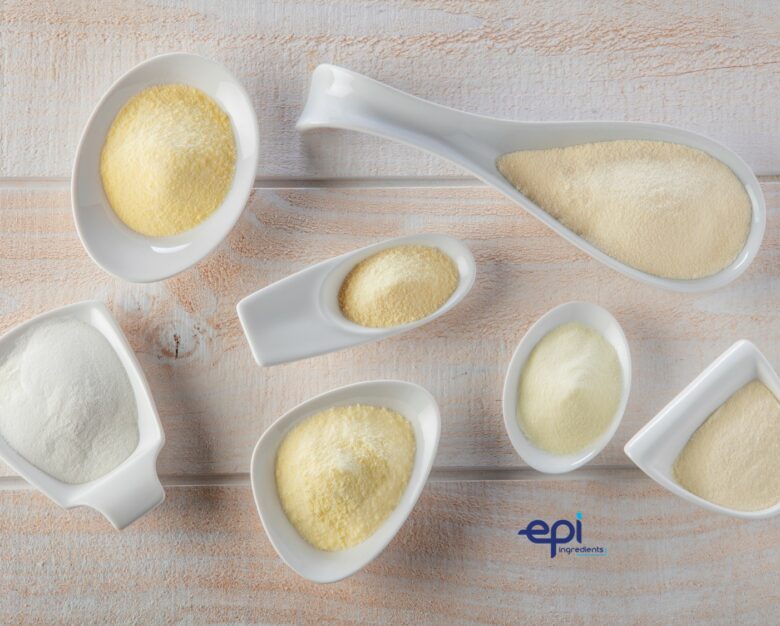
Dairy ingredients :
Dairy ingredients and co-products of milk processing (such as whey) have a wide range of functionalities, both technological and nutritional.
Dairy ingredients are most often in powdered form, which allows for a long shelf life and ease of use.
To produce a dairy ingredient is to functionalize by physical or thermal processes the dairy protein as a whole or separate fractions in order to have a product which introduced in a food matrix will bring a gelling, foaming, viscous, emulsifying power … or a pronounced dairy taste.
These are also more elaborate products such as yogurt powders or butter powders, matrices that are very well known in their natural solid form but that Epi-Ingrédient’s know-how has allowed us to offer in powder form in order to facilitate their use for certain applications.
Process :
Dairy ingredients are made from skimmed milk, but also from the various co-products of cheese and butter making processes.
With the development of filtration and separation techniques (MF, UF, Nano), it is possible to separate different fractions of milk, to concentrate them in order to obtain functional and nutritional ingredients.
Applications :
Dairy ingredients are used in many sectors of the food industry because of their functional benefits and their great naturalness.
The fields of application are varied, such as dairy products, ice cream, confectionery and chocolate, pastry, charcuterie, or beverages.
Examples of ingredients :
- Milk powders :
Skim milk powders are defined by their moisture content (3%, 3.5% or 4%), their protein content (codex value = 34% on ESD, up to native (non-standardized), and the heat treatments that the milk has undergone allowing the protein to be functionalized differently (LH = low heat, MH = Medium Heat and HH = High Heat).
- Caseins :
Caseins are the major proteins in milk (80%). These proteins are called “cheesable”, they are the ones that will structure the matrices during the manufacture of cheese.
It is possible to isolate them by using their properties in an acid medium. We thus obtain acid seine. This can also be transformed into caseinate (neutralization of the casein by a mineral). Depending on the mineral used, we obtain a calcium caseinate, or a sodium caseinate…
These different caseinates provide functional advantages in food matrices. They develop powers of emulsification, water binding, foaming, viscosity or thermal stability.
- Whey :
Whey is the co-product of cheese making, casein or membrane fractionation of native milk.
Each whey is different in terms of functional or organoleptic properties and depending on the upstream technology.
There are different types, such as demineralized whey and sweet whey.
Discover all our ingredients: https://epi-ingredients.com/en/ingredients/



